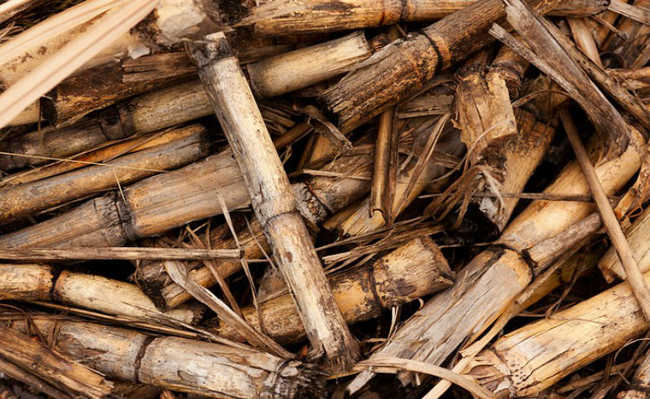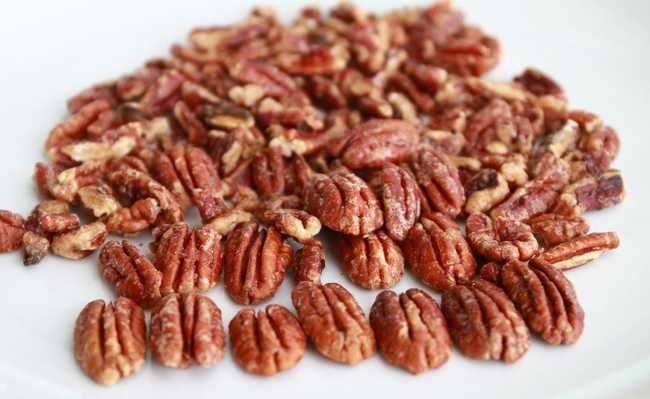What is biomass? Know advantages and disadvantages
Understand how it is possible to transform organic waste into electrical energy, the so-called biomass

Biomass is all organic matter of vegetable or animal origin used for the purpose of producing energy, such as charcoal, firewood, sugarcane bagasse, among others. As it is a dispersed and low-efficiency energy source, traditionally used in less developed countries, there is a certain lack of data regarding the representativeness of this energy source for the global energy matrix. However, according to a report by ANEEL, around 14% of the energy consumed in the world comes from this source and, according to another study by the Brazilian Journal of Pulmonology, 90% of homes in rural regions in poor countries use energy from biomass burning ( wood, charcoal, animal manure or agricultural waste), particularly in sub-Saharan Africa and Asia.
The use of biomass in thermoelectric power plants has been increasing and is being used to reach areas not covered by the electricity supply network, such as isolated rural communities. The use of cogeneration systems, which combine the generation of electricity from biomass with the production of heat, increasing the energy efficiency of production systems, is also becoming increasingly common.
What is cogeneration?
Biomass, such as charcoal or firewood, is what drives large parts of thermoelectric generators. Regardless of the type of fuel and engine, these generators lose most of the energy contained in the fuel as heat. On average, biomass energy lost to the environment in the form of heat represents 60% to 70% of total fuel energy. Thus, the generator efficiency is around approximately 30% to 40%.
As many buildings and industries need heating (for the indoor environment or for heating water), a cogeneration system was developed, through which the heat produced in the generation of electricity is incorporated into the production process in the form of steam. The main advantage of this system is the fuel economy for the heating process. In this way, the energy efficiency of the system increases, reaching up to 85% of the biomass energy of the fuel.
Biomass in Brazil
Currently, the resource with the greatest potential to be used as biomass in the generation of electricity in the country is sugarcane bagasse. The sugar-alcohol sector generates a large amount of waste, which can be used as biomass, mainly in cogeneration systems. Other vegetable varieties with great potential for the production of electricity are palm oil (palm oil), which has an average annual productivity per hectare four times greater than that of sugarcane, buriti, babassu and andiroba. They appear as alternatives for the supply of electricity in isolated communities, especially in the Amazon region.
When producing ethanol from sugarcane, around 28% of the sugarcane is transformed into bagasse. This bagasse is a biomass commonly used in plants for the production of low pressure steam, which is used in backpressure turbines in extraction equipment (63%) and in electricity generation (37%). Most of the low-pressure steam that leaves the mills is used for the process and heating of the juice (24%) and in the distillation apparatus. On average, each appliance requires around 12 kWh of electrical energy, a value that can be supplied by the biomass residues themselves. Other agricultural residues with high potential to be used as biomass in the production of electricity are rice husks, cashew nut husks and coconut husks.
Biomass Conversion Routes
Biomass sources can be classified as: woody vegetables (wood), non-woody vegetables (saccharides, cellulosic, starchy and aquatic), organic waste (agricultural, industrial, urban) and biofluids (vegetable oils). Biomass conversion routes are varied, and it is thanks to these conversion technologies that it is possible to obtain different varieties of biofuels such as ethanol, methanol, biodiesel and biogas. The main biomass conversion processes are:
direct combustion
Materials such as wood and all varieties of organic waste (agricultural, industrial and urban) can be subjected to combustion in order to generate energy. The combustion process consists of transforming the chemical energy existing in these biomass sources into heat. For energy purposes, direct combustion of biomass is done in ovens and stoves. Despite its practicality, the direct combustion process tends to be quite inefficient. In addition, fuels that can be used in the process generally have high humidity (20% or more in the case of firewood) and low energy density, making storage and transport difficult.
Gasification
It is a technology applied to urban and industrial organic waste and wood. Gasification consists of the conversion of solid biomass sources into gaseous ones through thermochemical reactions, involving hot steam and air or oxygen in quantities below the minimum for combustion to take place. The composition of the resulting gas is a mixture of carbon monoxide, hydrogen, methane, carbon dioxide and nitrogen, so these proportions vary with process conditions, especially in relation to the air or oxygen being used in the oxidation . The fuel generated from the combustion of this biomass is more versatile (can be used in internal combustion engines as well as a gas turbine) and clean (compounds such as sulfur can be removed during the process) than solid fuel versions. Furthermore, it is possible to produce synthetic gas from gasification, which can be applied in the synthesis of any hydrocarbon.
Pyrolysis
Pyrolysis, also known as carbonization, is the oldest process of converting a source of biomass (typically firewood) into another fuel (charcoal) with an energy density twice as high as the source material. Organic residues of agricultural origin are also frequently subjected to pyrolysis - in this case, the residues need to be previously compacted. The method consists of heating the material in an environment in which there is an “almost absence” of air. Pyrolysis also produces combustible gas, tar and pyro-wood, materials widely used in the industrial sector. The result of the process varies greatly from the condition of the original material (quantity and moisture). To produce one ton of charcoal, four to ten tons of firewood may be needed.
Transesterification
It is a chemical process that transforms vegetable oil biomass into an intermediate product, from the reaction between two alcohols (methanol and ethanol) and a base (sodium or potassium hydroxide). The products of the transesterification of this type of biomass are glycerin and biodiesel, a fuel that presents conditions similar to diesel and can be applied in internal combustion engines, for vehicular or stationary use.
anaerobic digestion
Like pyrolysis, anaerobic digestion must take place in an environment with “almost absence” of oxygen. The original biomass undergoes decomposition by the action of bacteria, just as it occurs naturally with almost all organic compounds. Organic waste, such as animal manure and industrial waste, can be treated through anaerobic digestion (that which occurs in the absence of oxygen) in biodigesters. The action of bacteria causes the necessary heating for decomposition to occur, however, in cold regions or times, it may be necessary to apply additional heat. The end product of anaerobic digestion is biogas, which is essentially composed of methane (50% to 75%) and carbon dioxide. The effluent generated can be used as fertilizer.
Fermentation
It is a biological process carried out by the action of microorganisms (usually yeasts) that convert sugars present in biomass sources, such as sugarcane, corn, beetroot and other plant species, into alcohol. The end result of biomass fermentation is the production of ethanol and methanol.
Applicability of biomass
Biomass is considered a renewable source of energy and has been used to replace fossil fuels, such as oil and coal, to generate electricity in thermoelectric plants and because it emits a lower amount of polluting gases compared to non-renewable ones. However, despite not being a fossil fuel, according to the study, burning biomass is one of the world's largest sources of toxic gases, particulate matter and greenhouse gases.
In the case of burning in large areas, whether forests, savannas or other types of vegetation, the emission of sulfur leads to changes in the pH of rainwater, contributing to the occurrence of acid rain. Methane and carbon dioxide emissions contribute to the intensification of the greenhouse effect, and mercury emissions lead to the contamination of aquatic bodies and enable the formation of methylmercury, a substance that is harmful to human health.
Recurrent and prolonged exposure to material generated from the biomass combustion process in indoor environments (wood stoves, fireplaces, etc.) has been associated with the increase in acute respiratory infections in children, which is considered one of the major causes of mortality children in developing countries. In addition, it is also associated with an increase in chronic obstructive pulmonary diseases, pneumoconiosis (disease caused by inhalation of dust), pulmonary tuberculosis, cataracts and blindness. In the case of burning sugarcane straw, the population living in the area surrounding the sugarcane plantation is exposed to dust from the burned biomass for approximately six months throughout the year.
For this reason, the National Council for the Environment (Conama) establishes emission limits for atmospheric pollutants from heat generation processes from the external combustion of sugarcane biomass, which makes it possible to regulate emissions and mitigate the social and environmental impacts associated with burning biomass.
Biomass also offers the possibility of being produced from a wide variety of materials, providing flexibility and security to the market, unlike fossil fuels themselves, especially oil. Another point is that, by using agricultural, industrial and urban organic waste to produce electricity, they are receiving a more “sustainable” destination than simple disposal. According to a study, most of the agricultural residues in Brazil are corn, soy, rice and wheat, the first two being the raw materials frequently used for the production of biodiesel.
Brazil has favorable conditions for the production of energy from biomass, such as the existence of large arable areas, which can be used for the production of biomass, and receives intense solar radiation throughout the year. However, there is concern regarding the production of first generation biofuels, which use vegetable raw material directly. In this case, biofuels could prevent situations of competition for arable land with the agricultural sector, putting the food security of the population at risk. Another issue relating to large tracts of land is the issue of environmental conservation. In addition to competing with agriculture, biofuels could end up putting pressure on areas earmarked for environmental conservation.










